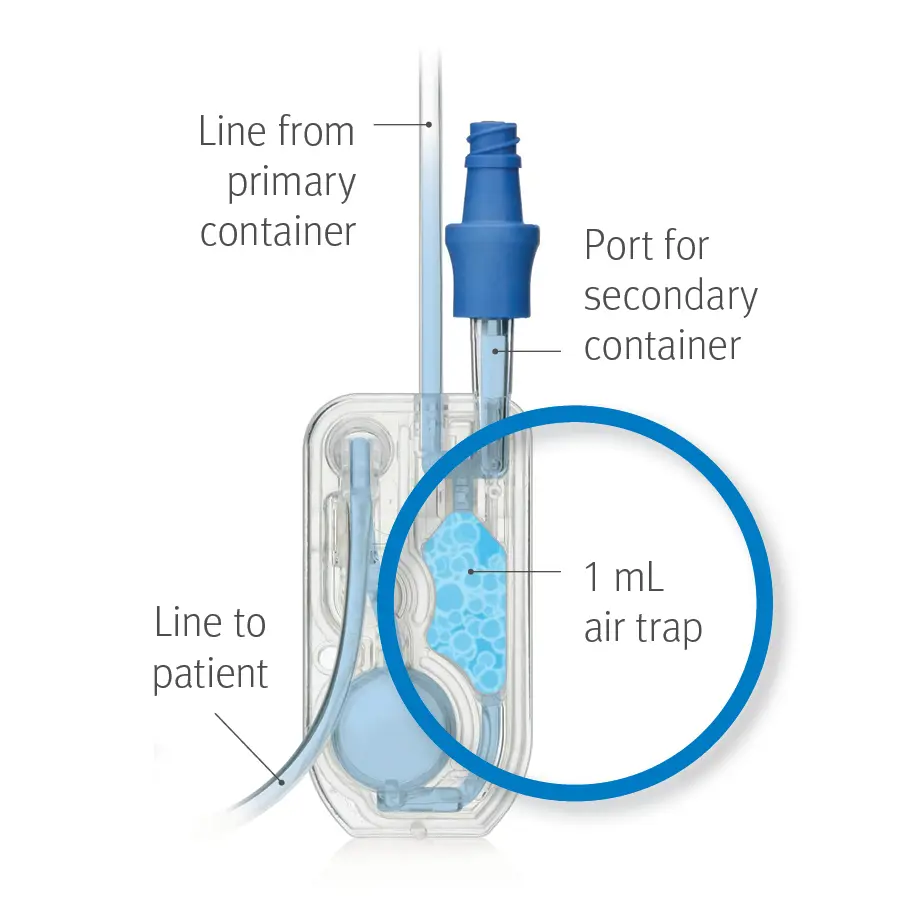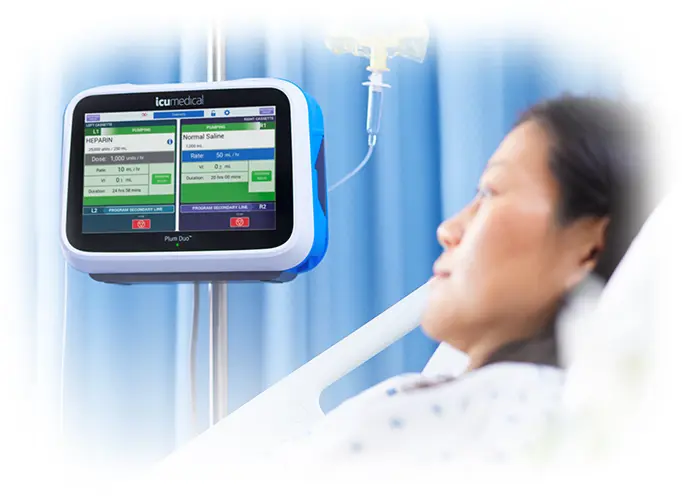Reduce IV Pump Alarms
Take charge of IV pump alarms to help keep care quiet
Medical device alarm fatigue presents a significant patient safety concern in hospitals.
More than 85% of alarms1 are false but ignoring a clinically actionable alarm can prove deadly.

Reduce air-in-line alarms and simplify air removal
Wouldn’t it be great to reduce air-in-line alarms your nursing staff deals with? Now you can. The Plum™ infusion system's innovative cassette system with unique air management technology helps to reduce air-in-line alarms by capturing up to one mL of air before alarming, resulting in fewer potential therapy interruptions.
If the alarm is triggered during a primary delivery, air can be removed quickly and easily by backpriming through the secondary administration port without disconnecting the line from the patient. This helps you not only limit exposure to hazardous medications and reduce the chance of contamination but also helps minimize wasted medication.

Automatically restart the pump and clear distal occlusion alarms
When smart IV pumps detect a distal occlusion, delivery stops immediately and an alarm sounds. Ordinarily, this would require a nurse to return to the patient bedside and resolve the alarm — even if the occlusion was caused by a patient bending their arm.
With Distal Occlusion Alarm Restart (DOAR) built into the Plum 360™ and Plum Duo™ systems, the pump automatically restarts if the occlusion clears within 60 seconds. There’s no need for the nurse to re-enter the patient room and manually restart the infusion, saving time and increasing workflow efficiency.
Zero air-in-line alarms?
See for yourself.
Download the free white paper below to learn how a recent study showed Plum 360 registered zero air-in-line alarms when compared to 21 with a competitive pump.
References
- Siebig S, Kuhls S, Imhoff M, et al. Intensive care unit alarms – how many do we need? Crit Care Med. 2010;38(2):451-456.









